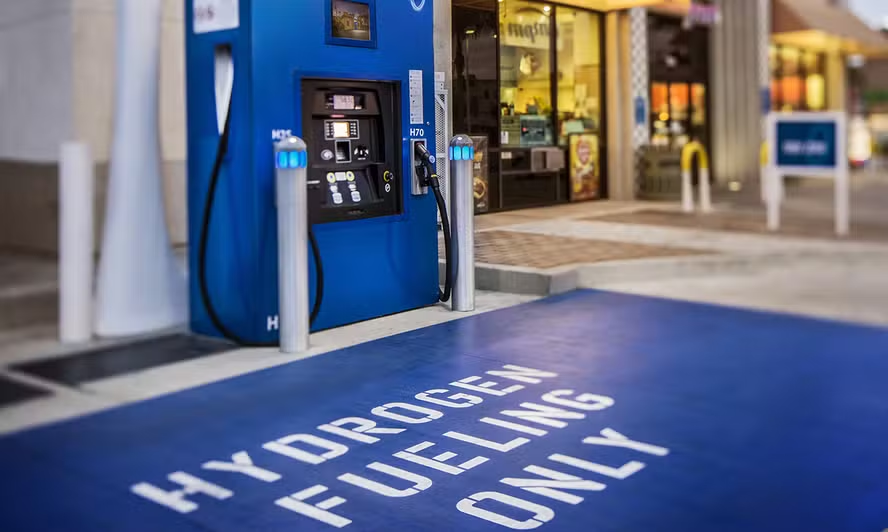Exploring the Future of Hydrogen Refueling Stations in California
As the world shifts toward cleaner, more sustainable energy solutions, California stands at the forefront of adopting hydrogen fuel cell technology.
Hydrogen refueling stations play a critical role in this transition, providing the infrastructure necessary to fuel hydrogen-powered vehicles (H2Vs) across the state.
With California’s ambitious environmental goals, the growth and development of hydrogen refueling stations will significantly influence the future of the automotive industry, reducing greenhouse gas emissions and making hydrogen-powered cars a viable option for consumers.

This article explores the current landscape of hydrogen refueling stations in California, upcoming advancements, challenges, and what the future holds for this green revolution.
Table of Contents
The Importance of Hydrogen Refueling Stations for California’s Green Future
California has long been a leader in environmental initiatives, and hydrogen fuel cell technology represents a crucial piece of its clean energy puzzle.
Unlike conventional internal combustion engine vehicles (ICEVs), hydrogen fuel cell vehicles (FCVs) produce zero emissions, with only water vapor being released into the atmosphere.
These vehicles offer a long driving range (similar to gasoline-powered cars) and fast refueling times, making them an attractive alternative to battery electric vehicles (BEVs), especially for longer trips or heavier vehicles like trucks.
However, for hydrogen vehicles to become mainstream, hydrogen refueling stations must expand significantly in both number and distribution. California has set aggressive targets for reducing carbon emissions, aiming for 100% zero-emission vehicles by 2035.
This ambitious goal is contingent on widespread adoption of both hydrogen and electric vehicles, necessitating an extensive network of hydrogen refueling stations across the state.
Current Landscape of Hydrogen Refueling Stations in California
California is already home to the largest number of hydrogen refueling stations in the U.S., with over 50 active stations as of 2025.
These stations are primarily concentrated in metropolitan areas like Los Angeles, San Francisco, and San Diego. However, they are also strategically located along major highways to facilitate long-distance travel, supporting both passenger vehicles and commercial vehicles such as buses and trucks.
Key Features of Existing Hydrogen Refueling Stations:
- Fast Refueling: Hydrogen vehicles can be refueled in 3–5 minutes, similar to conventional gas stations, which is a significant advantage over electric vehicles that typically require longer charging times.
- High-Pressure Dispensers: Most hydrogen stations use dispensers that provide hydrogen at 350 bar, with some newer stations moving to 700 bar, which allows for faster refueling and better storage density.
- Public-Private Partnerships: Stations are often operated through collaborations between private companies, such as Shell, Toyota, and Hyundai, and government-backed initiatives like the California Air Resources Board (CARB).
- Accessibility and Coverage: While the number of stations is growing, coverage remains limited in rural areas, with a focus on urban and high-traffic corridors.
Despite the growing network, California still faces significant challenges in scaling up hydrogen infrastructure to meet future demands.
The state’s extensive network of zero-emission vehicles—especially the Toyota Mirai, Hyundai Nexo, and Honda Clarity—has outpaced the expansion of refueling infrastructure, leading to concerns about station availability in underserved areas.
Key Players in California’s Hydrogen Refueling Station Expansion
The development of hydrogen refueling stations in California is being driven by both private and public sector players. These entities are working collaboratively to ensure that the state remains a leader in the hydrogen economy.
Major Companies Involved:
- Air Products and Chemicals, Inc.: One of the largest producers of hydrogen and a key player in the construction and operation of hydrogen refueling stations across California.
- Shell Hydrogen: A global energy giant committed to hydrogen as a clean energy source, Shell has invested in the development of hydrogen refueling stations in key Californian markets.
- Toyota and Honda: These automotive companies not only produce hydrogen vehicles but are also involved in fueling infrastructure development, providing a holistic approach to the hydrogen economy.
Government Initiatives:
- California Fuel Cell Partnership (CaFCP): A public-private partnership aimed at accelerating the development of hydrogen infrastructure in California. CaFCP works to ensure that the growth of hydrogen refueling stations aligns with the state’s goals for zero-emission transportation.
- California Air Resources Board (CARB): CARB is responsible for the oversight of California’s hydrogen station infrastructure and the management of state incentives for both hydrogen vehicle purchases and refueling station development.
Challenges Facing the Expansion of Hydrogen Refueling Stations
Although the state is making significant strides in expanding its network of hydrogen refueling stations, several challenges remain:
Cost and Infrastructure Development
The cost of building a hydrogen refueling station can be substantial, with each station potentially requiring investments upwards of $1 million.
This high cost, along with the need for specialized equipment such as high-pressure dispensers, hydrogen compressors, and storage tanks, presents a major barrier to rapid expansion.
Hydrogen Production
Currently, much of the hydrogen produced for fuel cell vehicles is derived from natural gas (through a process called steam methane reforming), which, although cleaner than gasoline, still releases CO2 emissions.
While green hydrogen—produced via electrolysis using renewable energy—is a promising solution, it is still more expensive to produce and distribute on a large scale.
Geographic Coverage
Although California’s hydrogen refueling stations are concentrated in major metropolitan areas and along key highways, the rural parts of the state remain underserved. The challenge is not only to expand the number of stations but also to ensure that they are equitably distributed across the state to provide long-distance hydrogen refueling access.
Public Awareness and Adoption
Despite the growth of the hydrogen vehicle market, public awareness of hydrogen-powered vehicles and their refueling infrastructure remains low. Many potential consumers are still unaware of the availability of hydrogen vehicles or the locations of refueling stations.
The Future of Hydrogen Refueling Stations in California
As California pushes toward its zero-emission vehicle targets, the future of hydrogen refueling stations looks promising, but several advancements and expansions are needed to support the state’s bold vision.
Expansion of Infrastructure
California plans to significantly increase the number of hydrogen refueling stations in the coming decade. A major initiative under the state’s California Hydrogen Highway Network aims to increase the number of stations from 50 to 200 by 2030.
This expansion will help provide broader coverage and support both passenger and heavy-duty vehicles.
Green Hydrogen Production
The transition from gray hydrogen (produced from fossil fuels) to green hydrogen (produced from renewable electricity) is crucial for the long-term viability of hydrogen refueling stations.
California is investing heavily in renewable energy infrastructure, which will allow for the scaling up of green hydrogen production. The development of new electrolysis plants powered by solar, wind, and hydropower will help lower the cost of green hydrogen and ensure its availability at fueling stations.
Government Incentives and Policy Support
California has been proactive in offering incentives to both consumers and businesses to support the adoption of hydrogen vehicles and the expansion of refueling stations.
The state continues to fund hydrogen infrastructure through programs like the Low Carbon Fuel Standard (LCFS) and the California Hydrogen Infrastructure Grant Program, which aim to offset the high initial costs of hydrogen refueling stations and encourage private investment.
Integration with Other Clean Technologies
As California builds out its hydrogen infrastructure, there is potential for synergy with other clean technologies. For example, hydrogen refueling stations could be paired with renewable energy sources such as solar and wind power, creating a more sustainable and efficient refueling network.
Additionally, hydrogen-powered trucks and buses could be integrated into the state’s public transportation and freight systems, further driving demand for hydrogen refueling stations.
The Role of Hydrogen in California’s Carbon-Neutral Future
The future of hydrogen refueling stations is integral to California’s broader environmental goals. By diversifying the state’s transportation fuels, hydrogen offers a pathway to achieving a carbon-neutral economy.
The transition to hydrogen is not only essential for decarbonizing the passenger vehicle market but also for reducing emissions from heavy-duty vehicles, construction equipment, and industrial applications.
Hydrogen has the potential to serve as a critical link between renewable energy production, zero-emission mobility, and sustainable transportation infrastructure.
Conclusion
California’s ambitious plans for expanding its network of hydrogen refueling stations are essential to the state’s push toward a sustainable, low-carbon future.
While there are challenges in terms of cost, infrastructure development, and public adoption, the future looks bright as the state moves closer to achieving its goal of 100% zero-emission vehicles by 2035.
As hydrogen refueling stations become more widespread and green hydrogen production scales up, hydrogen-powered vehicles will likely play a major role in California’s clean energy transition, transforming the state’s transportation landscape for years to come.
Sources and Inspirations:
This article draws insights from reports by the California Air Resources Board (CARB), California Hydrogen Highway Network, and Hydrogen Council. Additionally, data from industry reports by Tire Rack, J.D. Power, and California Fuel Cell Partnership (CaFCP) were instrumental in analyzing the growth potential for hydrogen refueling stations.
